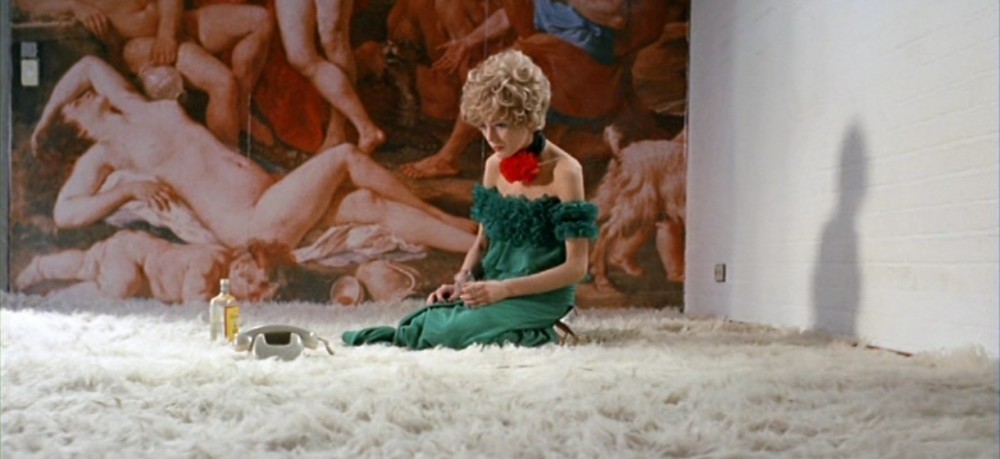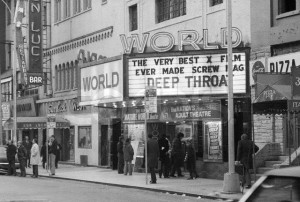Starting from Prof. Herzog’s point yesterday about the vulnerability of the peep show viewer’s body, I’d like to discuss that vulnerability in contrast to the anonymity of the viewer in a porn theater. Since both were staples of Times Square’s sex industry wonderland, I’m interested in the different viewing experiences and the relationship between the viewer and the actors on film. As Prof. Herzog pointed out, in a peep show the exposed female body would actually be fairly protected, literally placed in a box and only available for one person’s view. The peep show patron, on the other hand, would be vulnerable with his or her body on display. As I understand it, porn theaters gradually started replacing peep shows around the 1960s and 1970s. In the more traditional Metzian structure of theatrical apparatus, the viewer’s body is hidden in a dark room, while the film actors are fully on display on screen. The peep show viewer’s body (and eyes) are placed outside the entire apparatus itself, breaking with Metz’s argument for the viewer as a part of the apparatus: the spectator is the searchlight (which also duplicates the camera) as well as the screen (which also duplicates the film strip); Metz deems this the “mirror-chain” (824-5). Since the peep show removes the spectator from the apparatus and prevents the spectator from looking at himself looking at the screen (as in Metz’s formulation), perhaps the anonymity of the peep show viewer is actually less anonymous than the porn theater spectator who, though situated in a dark room, sees himself reflected on screen.



